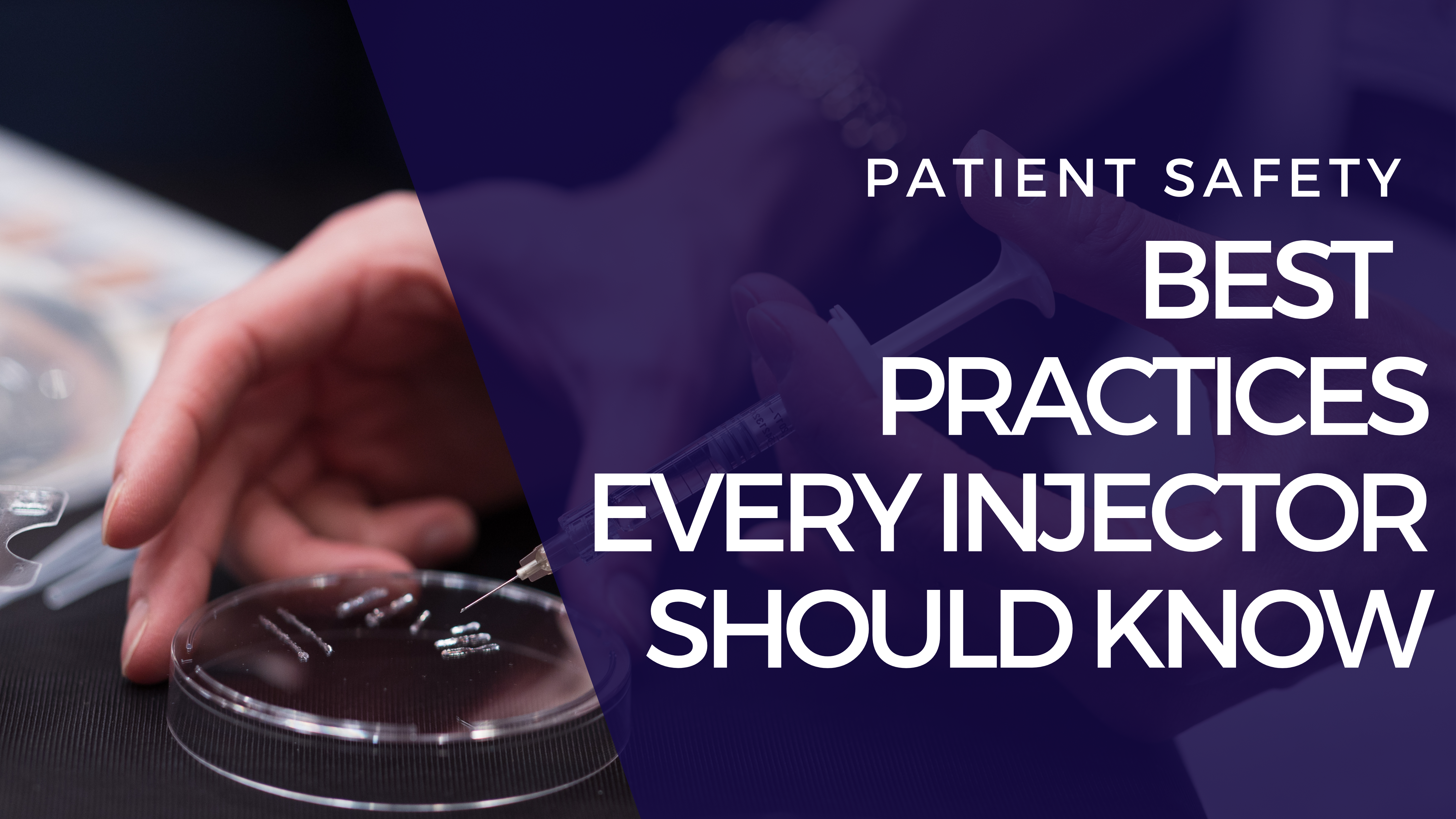
Patient Safety in Aesthetic Medicine: Best Practices Every Injector Should Know
Why safety isn’t optional — it’s the foundation of every great injector’s success.
Dr. Andrew Dargie
Founder and Lead Educator
MD, FRCPC, Aesthetic Medicine Specialist
Dr. Andrew Dargie is a leading expert in medical aesthetics with over 15 years of experience. He has trained thousands of medical professionals worldwide and is recognized for his innovative injection techniques and commitment to patient safety.
Whether you're a new injector entering the world of aesthetics or an experienced provider scaling your cosmetic practice, patient safety should always be your number one priority. Beyond results, safety is what builds trust, encourages referrals, and protects your reputation in this rapidly growing industry.
In this blog, we outline the essential safety principles that every nurse or physician injector should know — before, during, and after each treatment.
Why Patient Safety Matters in Aesthetic Medicine
Aesthetic injections are often seen as “low risk,” but that doesn’t mean they’re risk-free. As injectors, we’re working with prescription medications, vascular anatomy, and patient expectations — and any one of those, if mishandled, can lead to complications or even permanent harm.
That’s why the most successful injectors don’t just aim for great results. They operate from a place of deep anatomical knowledge, sound clinical judgment, and consistent safety protocols.
1. Know Your Anatomy
Understanding facial anatomy isn’t optional. It’s your number-one defense against complications like vascular occlusion, ptosis, or asymmetry. Top injectors don’t just memorize muscles and vessels — they understand depth, variability, danger zones, and how product behaves in different planes of the face.
At the botox course, we require all our learners to take our detailed online didactic anatomy training as a prerequisite to our hands-on training.
2. Proper Patient Assessment
The best safety outcomes start before you even pick up a syringe. Take time to:
Review medical history and medications
Ask about previous aesthetic treatments and outcomes
Understand the patient's goals — and manage expectations
Rule out contraindications such as pregnancy, active infections, or autoimmune conditions
Detailed documentation is essential — not just for safety, but from a legal and regulatory standpoint as well. We review patient assessment in detail at our online didactic and hands-on training.
3. Aseptic Technique is Non-Negotiable
The injection site should be cleaned properly prior to injection. Ensure you follow strict aseptic technique, including:
Disinfecting the skin thoroughly
Using sterile needles and syringes
Wearing gloves
4. Have a Complication Protocol
Every injector should be prepared to manage complications. That includes:
Having hyaluronidase (for HA filler reversal) on hand
Recognizing early signs of vascular occlusion or adverse reactions
Being ready to refer or escalate care quickly
It’s not about avoiding every issue — it’s about knowing how to respond.
5. Stay Within Your Scope — Legally and Clinically
Injectors must always work within the scope of their license and provincial regulations. That includes:
Working under an appropriate Medical Director (when required)
Having proper delegation and documentation in place
Keeping up with CME requirements and professional college guidelines
The legal landscape of aesthetic medicine is changing fast, and ignorance is not a defense.
6. Follow-Up Matters
Patient care doesn’t stop after the injection. Schedule follow-ups, encourage communication, and be proactive about any concerns your patient may have. This:
Reinforces safety and professionalism
Helps identify and treat delayed side effects
Builds long-term patient loyalty and satisfaction
7. Invest in Ongoing Training
Even seasoned injectors benefit from ongoing education. Seek out anatomy-based, hands-on training courses that prioritize safety and clinical decision-making — not just technique.
At the botox course, our entire approach is built around safe, evidence-based injection practices that protect both the patient and the provider.
Safety is the Standard — Not a Feature
In aesthetic medicine, patient safety isn’t just about avoiding complications. It’s about building a reputable, sustainable practice that earns trust and delivers ethical, consistent results.
If you're ready to advance your clinical confidence and set a higher standard for your aesthetic career, our team of experienced educators is here to help. Explore our botox and filler training options!